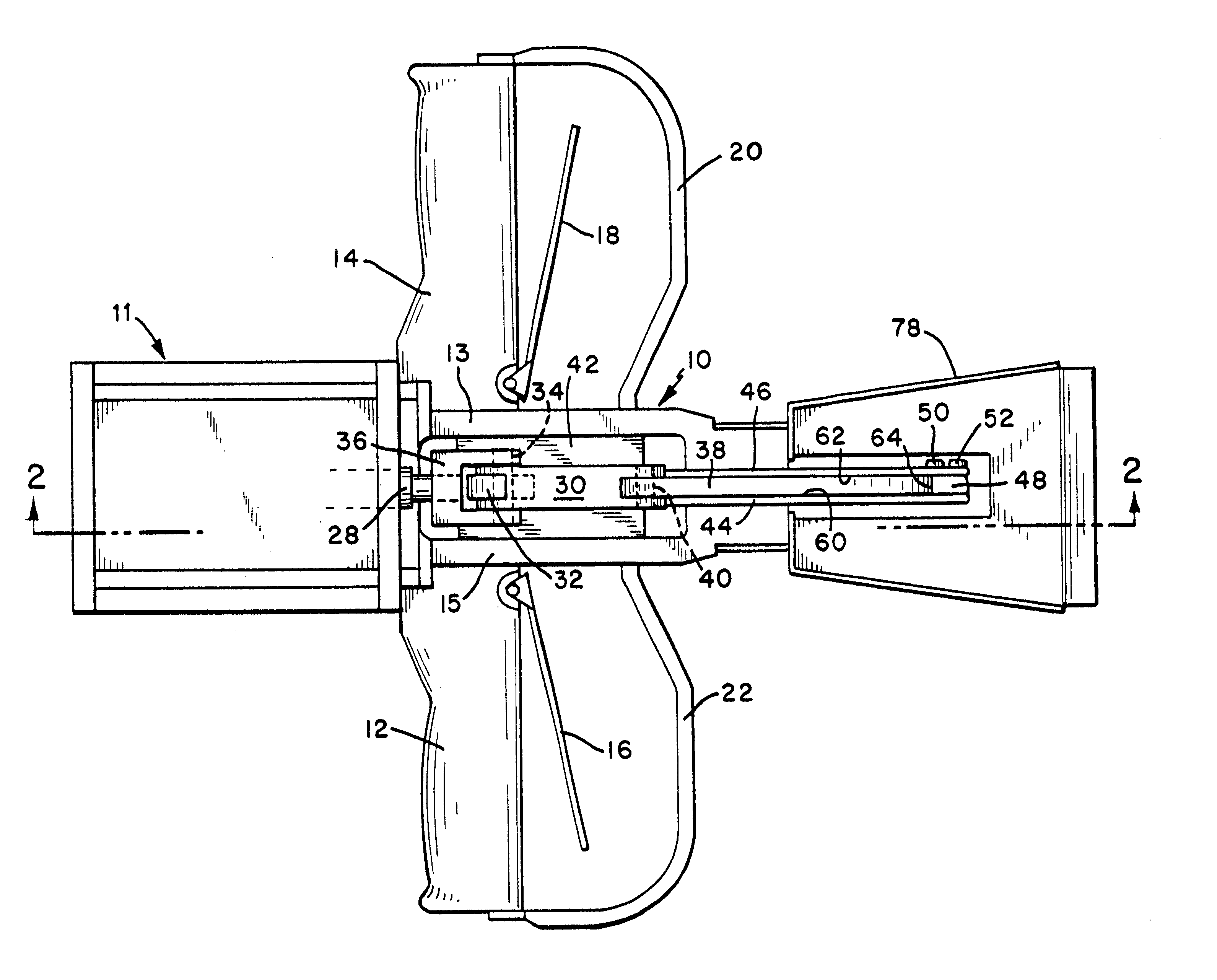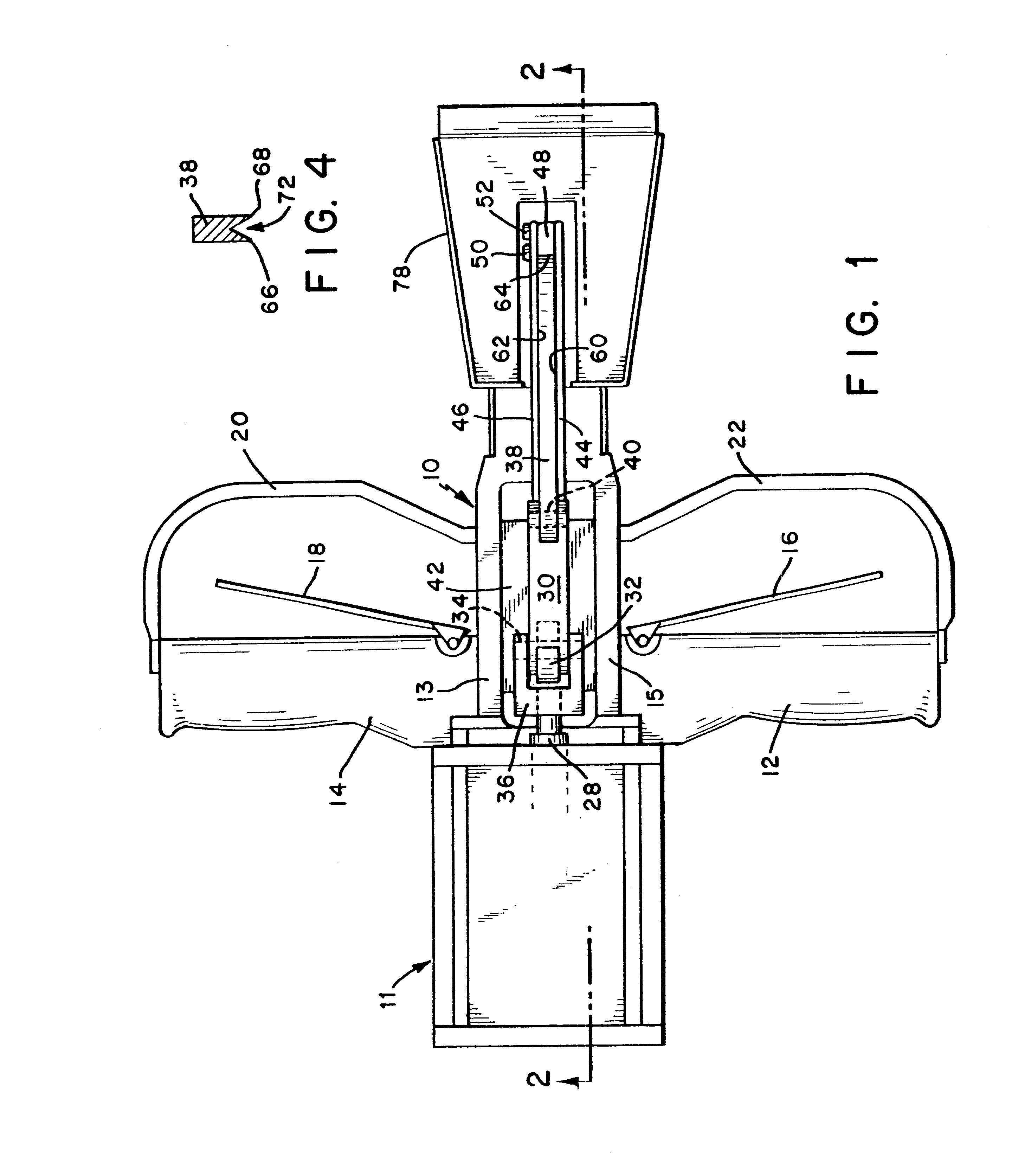Toe web cutter with stationary blade unit
a technology of stationary blades and cutters, which is applied in the field of cutters, can solve the problems of loss of correct alignment, difficult to achieve the correct alignment, and the blade positioned against the carcass begins to move,
- Summary
- Abstract
- Description
- Claims
- Application Information
AI Technical Summary
Benefits of technology
Problems solved by technology
Method used
Image
Examples
Embodiment Construction
)
In describing the preferred embodiment of the present invention, reference will be made herein to FIGS. 1-4 of the drawings in which like numerals refer to like features of the invention.
Referring to FIG. 1 of the present invention, the toe web cutter includes a tool body 10 having a right handle 12 and a left handle 14. Corresponding triggers 16, 18 are mounted on the handles so that the operator's hands can actuate them while the tool is being held. The triggers operate a pneumatic drive mechanism 11 mounted on the body (see FIGS. 2 and 3). The drive mechanism may be mounted inside the body, or as-shown, mounted to the exterior of the body.
For safety, both the right trigger 16 and the left trigger 18 must be operated in order for the blades to close. This ensures that the operator's hands will be on the handles and out of the cutting area. Handle guards 20 and 22 are provided to further protect the operator's hands during tool use.
Referring to FIG. 2, the drive mechanism 11 compr...
PUM
 Login to View More
Login to View More Abstract
Description
Claims
Application Information
 Login to View More
Login to View More - R&D
- Intellectual Property
- Life Sciences
- Materials
- Tech Scout
- Unparalleled Data Quality
- Higher Quality Content
- 60% Fewer Hallucinations
Browse by: Latest US Patents, China's latest patents, Technical Efficacy Thesaurus, Application Domain, Technology Topic, Popular Technical Reports.
© 2025 PatSnap. All rights reserved.Legal|Privacy policy|Modern Slavery Act Transparency Statement|Sitemap|About US| Contact US: help@patsnap.com



